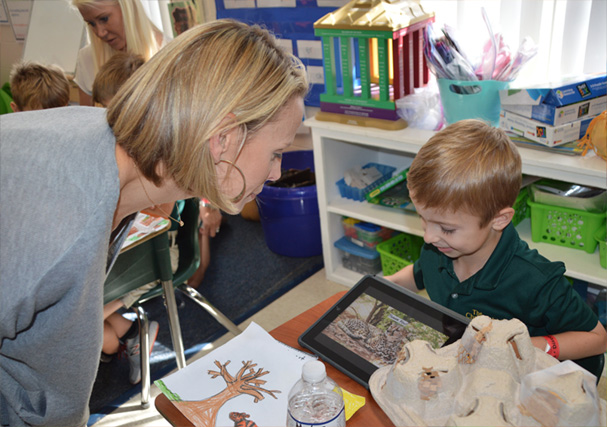What type of learning is open ended, engaging, creative and mimics real world problems?
Steam 101
By Christi Schwalk, First Grade Teacher
 What type of learning is open ended, engaging, creative and mimics real world problems? STEAM! It is comprised of five disciplines used collaboratively: Science, Technology, Engineering, Art and Mathematics. The number of careers involving STEAM is growing rapidly in our country so preparing students today for the STEAM jobs of tomorrow is essential. Activities that focus on STEAM help children learn through trial and error, experimenting and problem solving. STEAM begins at home by pointing out how and why things in our everyday lives work. An acorn falls? It fell due to gravity. Families can also focus on activities that focus on one of the five disciplines of STEAM. Gardening, building forts, mixing paint colors, filling different sized containers and making a ramp to race play cars are a few examples. Parents can also encourage problem solving by asking questions such as, “What are you working on?” “What do you think will happen?” and “What else could you try?” Educators promote STEAM learning into the classroom by providing open-ended questions and allowing students the time and materials to solve them. The Christ School’s first graders chose an animal to research. In addition, they were asked to create a structure that would provide shade for their animal. Using their research about the animal’s characteristics and habitat, the students designed, measured, built, experimented, revised and re-built their structures until they provided shade for a clay replica of their animal. When STEAM education is in place, children learn to question like a scientist, design like a technologist, build like an engineer, create like an artist, and deduce like a mathematician!
What type of learning is open ended, engaging, creative and mimics real world problems? STEAM! It is comprised of five disciplines used collaboratively: Science, Technology, Engineering, Art and Mathematics. The number of careers involving STEAM is growing rapidly in our country so preparing students today for the STEAM jobs of tomorrow is essential. Activities that focus on STEAM help children learn through trial and error, experimenting and problem solving. STEAM begins at home by pointing out how and why things in our everyday lives work. An acorn falls? It fell due to gravity. Families can also focus on activities that focus on one of the five disciplines of STEAM. Gardening, building forts, mixing paint colors, filling different sized containers and making a ramp to race play cars are a few examples. Parents can also encourage problem solving by asking questions such as, “What are you working on?” “What do you think will happen?” and “What else could you try?” Educators promote STEAM learning into the classroom by providing open-ended questions and allowing students the time and materials to solve them. The Christ School’s first graders chose an animal to research. In addition, they were asked to create a structure that would provide shade for their animal. Using their research about the animal’s characteristics and habitat, the students designed, measured, built, experimented, revised and re-built their structures until they provided shade for a clay replica of their animal. When STEAM education is in place, children learn to question like a scientist, design like a technologist, build like an engineer, create like an artist, and deduce like a mathematician!